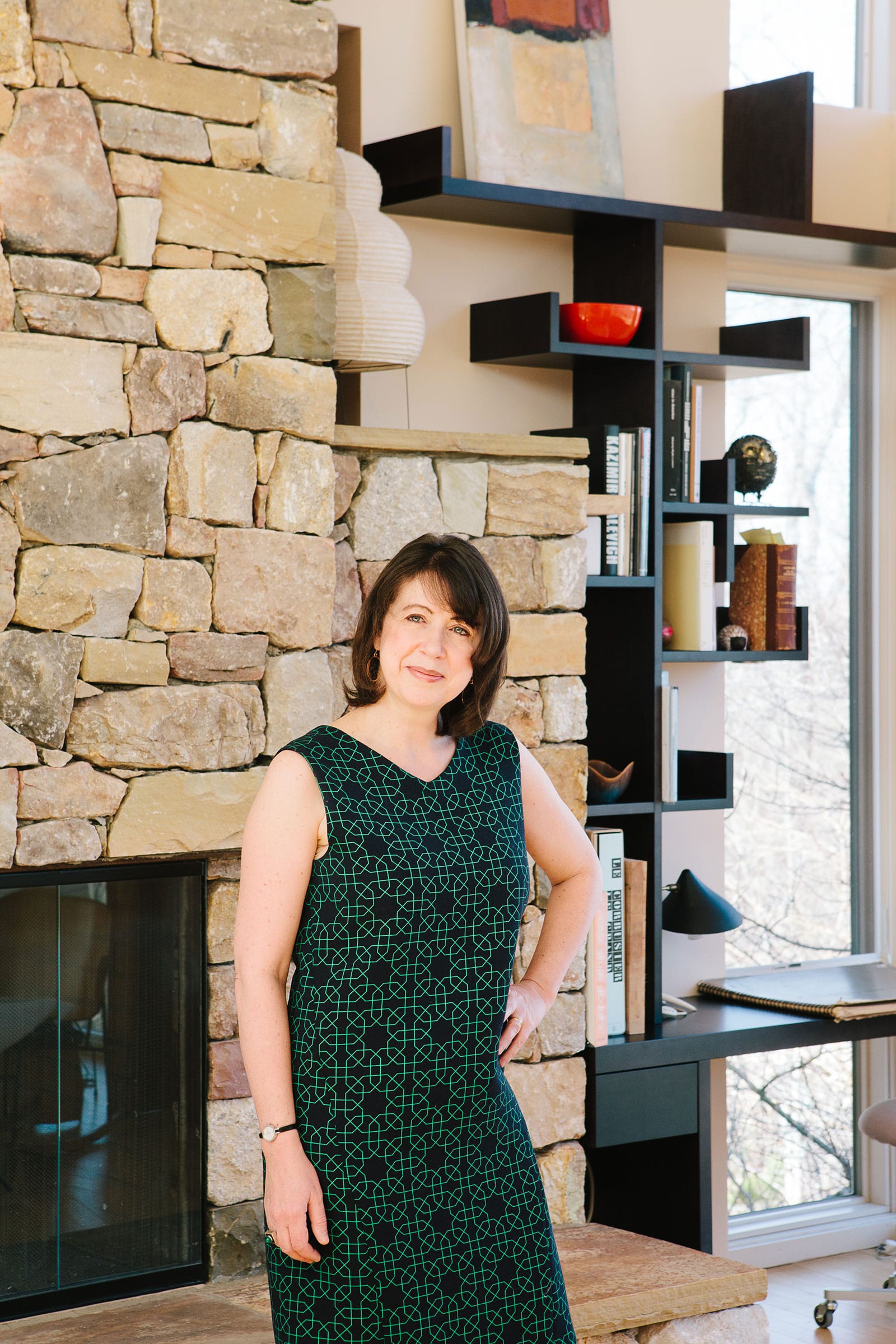
Photo courtesy of Chapel Hill Magazine
This architect builds for the North Carolina climate and for clients who crave sustainability.
Light is the most important factor in architect Arielle Schechter’s design philosophy. Much of her design inspiration comes from Japanese architects who use screens and overhangs to block the sun while creating a seamless translucence from outdoors to indoors—that, and modernist design that connects inside spaces to nature. Schechter became interested in her craft at a young age, growing up with a famous mid-century architect as a father. “I always thought I’d work for him but, when he died, I had a lot of things I wanted to say in architecture,” she says. “I totally believe there’s no point in designing anything, much less a green building, unless you’re going to make it wonderful for the people who live in it, too.”
So she started her firm Arielle Condoret Schechter, AIA, and she now works tirelessly to change public opinion that architects are scary and expensive to work with. “I really don’t care how much money I make. I just want to get people to stop buying cookie-cutter, badly built developer houses that don’t have an architect involved because they’re inefficient,” Schechter says. North Carolina, where she constructed her own house—now a certified Backyard Wildlife Habitat and nearly net zero—and in 2009, her own firm, has a particularly difficult climate to build for. Because of hot summers, cold winters, and lots of humidity houses in North Carolina have to be built with moisture levels and the sun’s position in mind.

Photo courtesy of Tzu Chen Photography
1. Haw River House
The North Carolina sun is a beast for Schechter to work with. “We all need to be reminded that citing the house properly to take advantage of the southern sun—at least in our hemisphere—is half the battle as far as getting that sun in the winter and keeping it out in the summer.” The hot western sun was a prominent factor in designing for the Haw River House, which has a western-facing front. Though Schechter originally wanted to include screens to tackle this, she settled on exterior shades for affordability. While Schechter typically has creative freedom at the project’s start, it doesn’t always last. “As the process continues—and this is kind of the heartbreaking part—most clients will remove some of my best ideas. It’s part of architecture and just something you have to live with.”
The Haw River House clients chose to keep the cantilevered porches and decks, as well as the butterfly roof, which Schechter installed because the site’s well provides less than a gallon of water per minute. The butterfly roof funnels rainwater from 6,500 square feet of roof area into two large, metal cisterns that lead to triple-filter the runoff. The harsh conditions surrounding Haw River House inspired the site’s sustainable features. For example, a lack of reliable electricity led to a rooftop solar installation and geothermal wells.
EXTERIOR/INTERIOR DESIGN
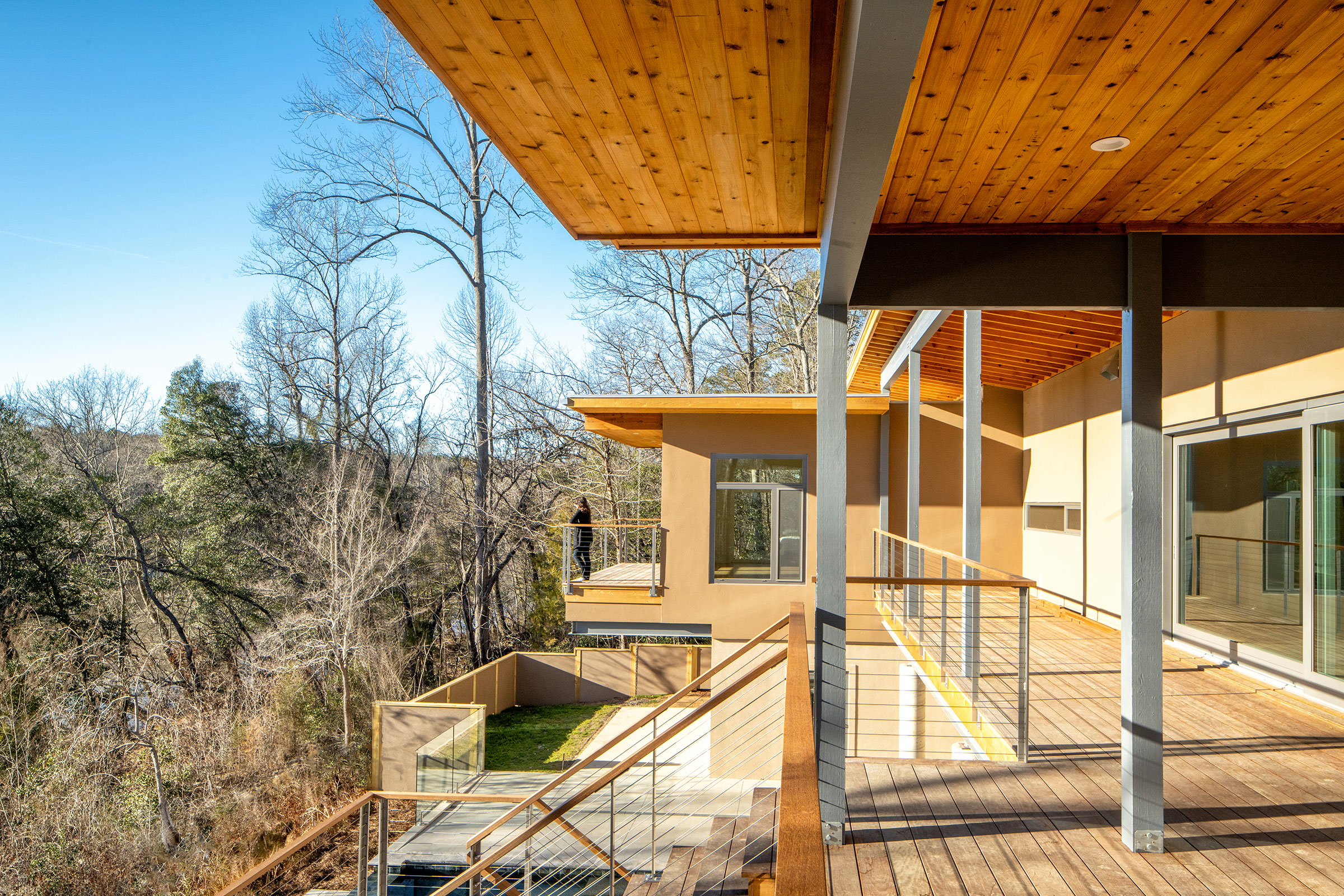
Photo courtesy of Tzu Chen Photography
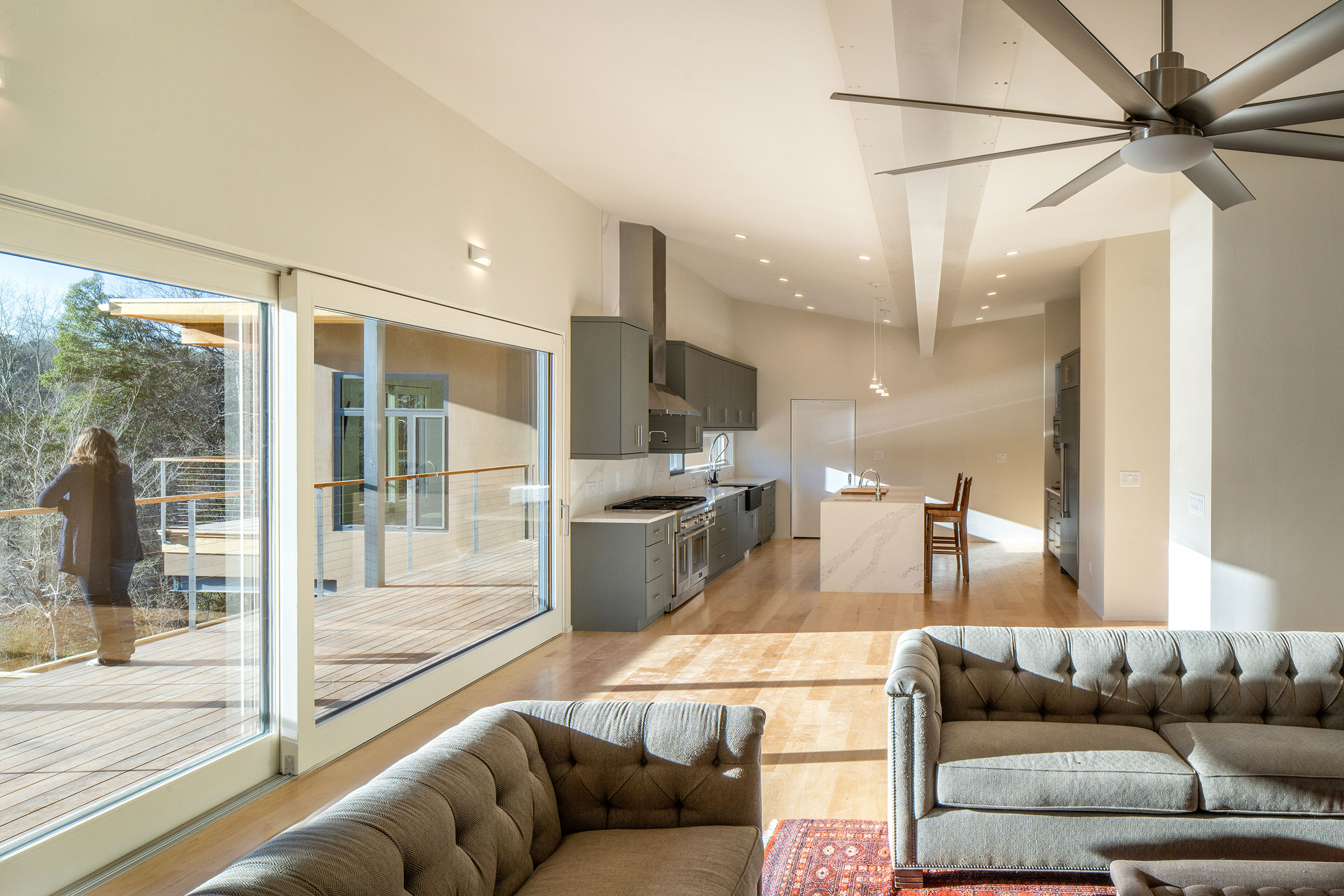
Photo courtesy of Tzu Chen Photography
Project: Haw River Home Location: Chatham County, North Carolina Completion: January 2020 Size: 2,600 square feet Contractor: Village Building Co. Structural Engineer: Red Engineering and Design Windows and Exterior Glass Doors: Awilux, Poland, Eurostar Fenestration Rainwater Cisterns and Purifying Systems: Mike Ruck PV System: Action Solar
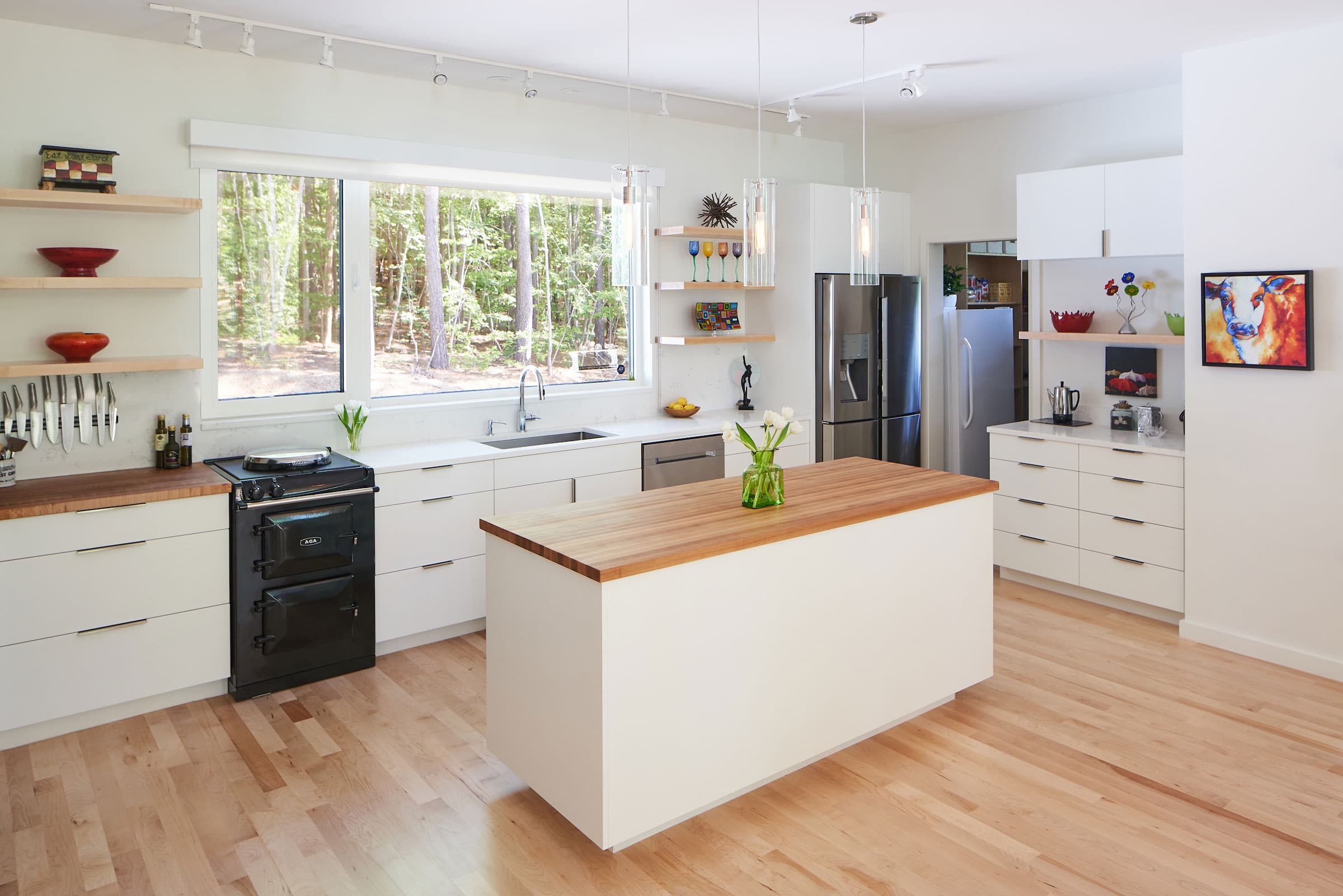
Photo by Keith Issacs
2. Privacy House
Schechter built the Privacy House for clients who were tired of their previous “cookie-cutter development.” A cypress privacy screen to the east and a deep porch to the south help seclude them. Though the couple wanted a tiny house, the development restricted houses under 2,000 square feet. So Schechter added a study off the bedrooms to fit the bill. “Luckily they didn’t have a rule against solar panels or flat roofs,” she says.
Schechter enjoys longer projects like the Privacy House that allow her to be more involved with the sites, contractors, and clients. “These things take time because I don’t rush it. I can fast-track it, but I prefer to take our time to make sure everything is exactly like [the clients] want it. I want them to feel comfortable with the different steps.” In the case of the Privacy House, these steps included making the home Net Zero Passive by appropriately positioning it on the site for maximum solar gain, light, and ventilation. “Building green is easy. I don’t want people to be scared of it. It’s a matter of getting used to certain strategies,” Schechter says. “It’s a lot easier than people think.”
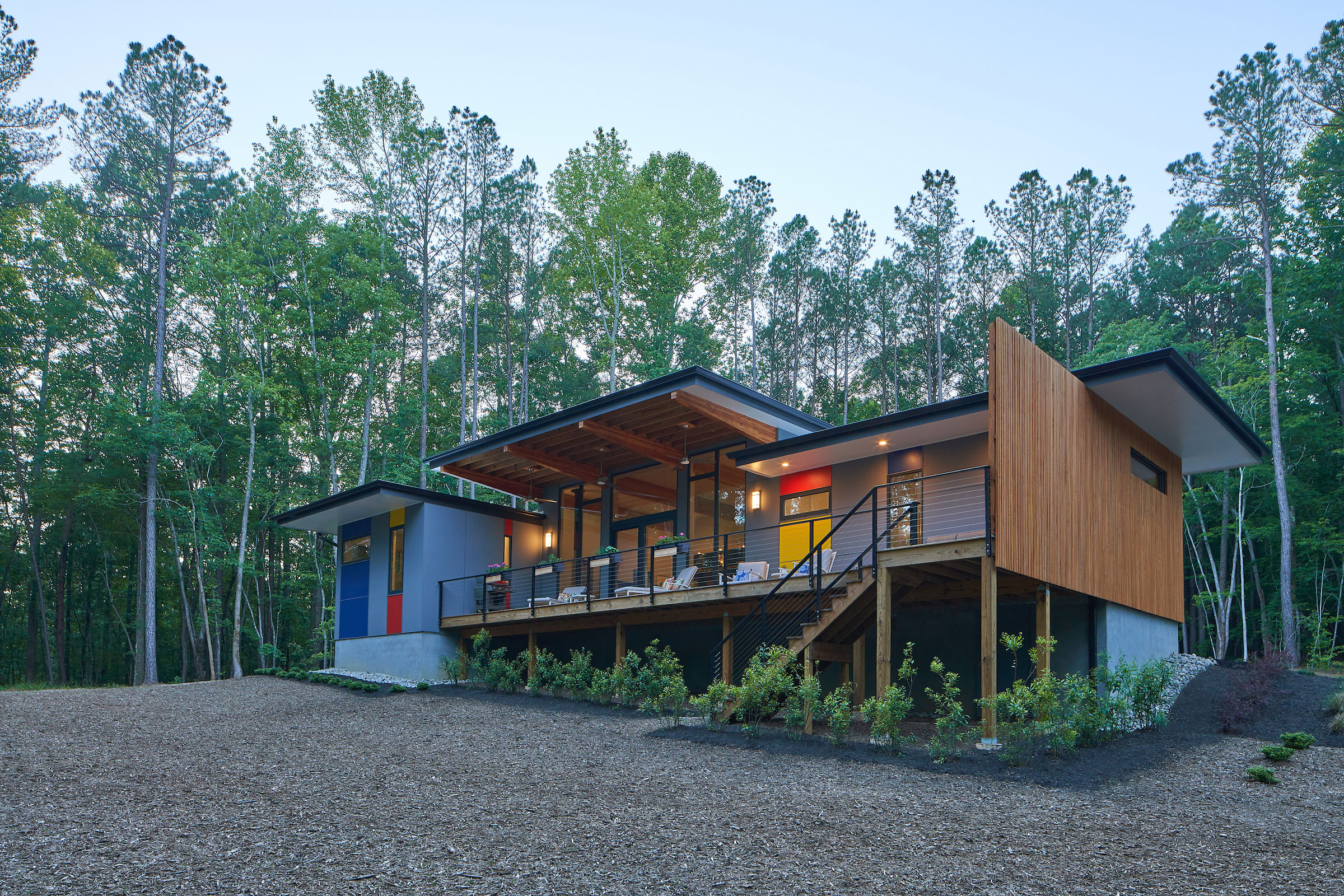
Photo by Keith Issacs

Photo by Keith Issacs
Project: Privacy House Location: Chatham County, North Carolina Completion: September 2018 Size: 2,000 square feet Builder: Newphire Building. PV System: Action Solar Passive Windows: Eurostar Fenestration Structural Engineer: Red Engineering and Design
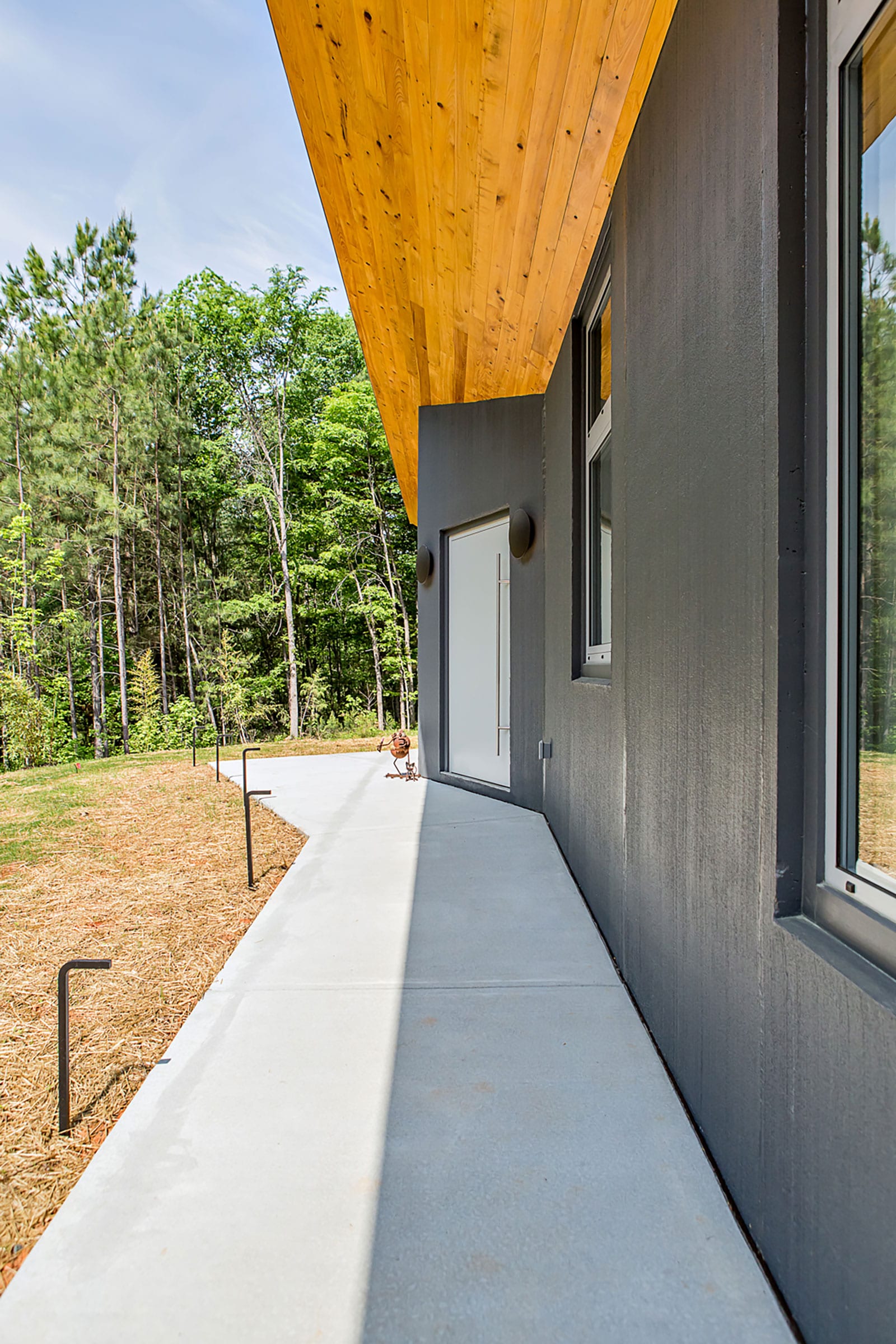
Photo by Iman Woods
3. Serdar Net Positive House
Schechter started her Micropolis Houses project—a collection of tiny, customized houses, each no larger than 1,500 square feet—after noticing the white space for those who wanted small, affordable residences that weren’t mobile homes. Her Serdar Net Positive House was built for only $225 per square foot. Its compact design and simple shape makes it cheaper than larger houses with costlier energy bills, while its solar array, tight insulation, and concrete floors make it more sustainable. Plus, with a cheaper home, residents can spend their money elsewhere, Schechter says. These “goodies” might be a grand outdoor space, screened-in porch, or in the case of the Serdar Net Positive House, a luxury spa bathroom designed for life-long living with no shower curbs and a walk-in shower.
Schechter says everyone who has bought one of her Micropolis Houses makes them “a little bit bigger because I don’t think people really want to downsize as much as they think they do. To me that’s OK. At least they’re thinking smaller, thinking more sustainable. I don’t have a problem with that, as long as people are trying.” In the future she believes people will continue building smaller. “A lot of my clients don’t start out as green as they end up being. Somehow, over the process of design, they get really excited about it. That makes me so unreasonably happy.”
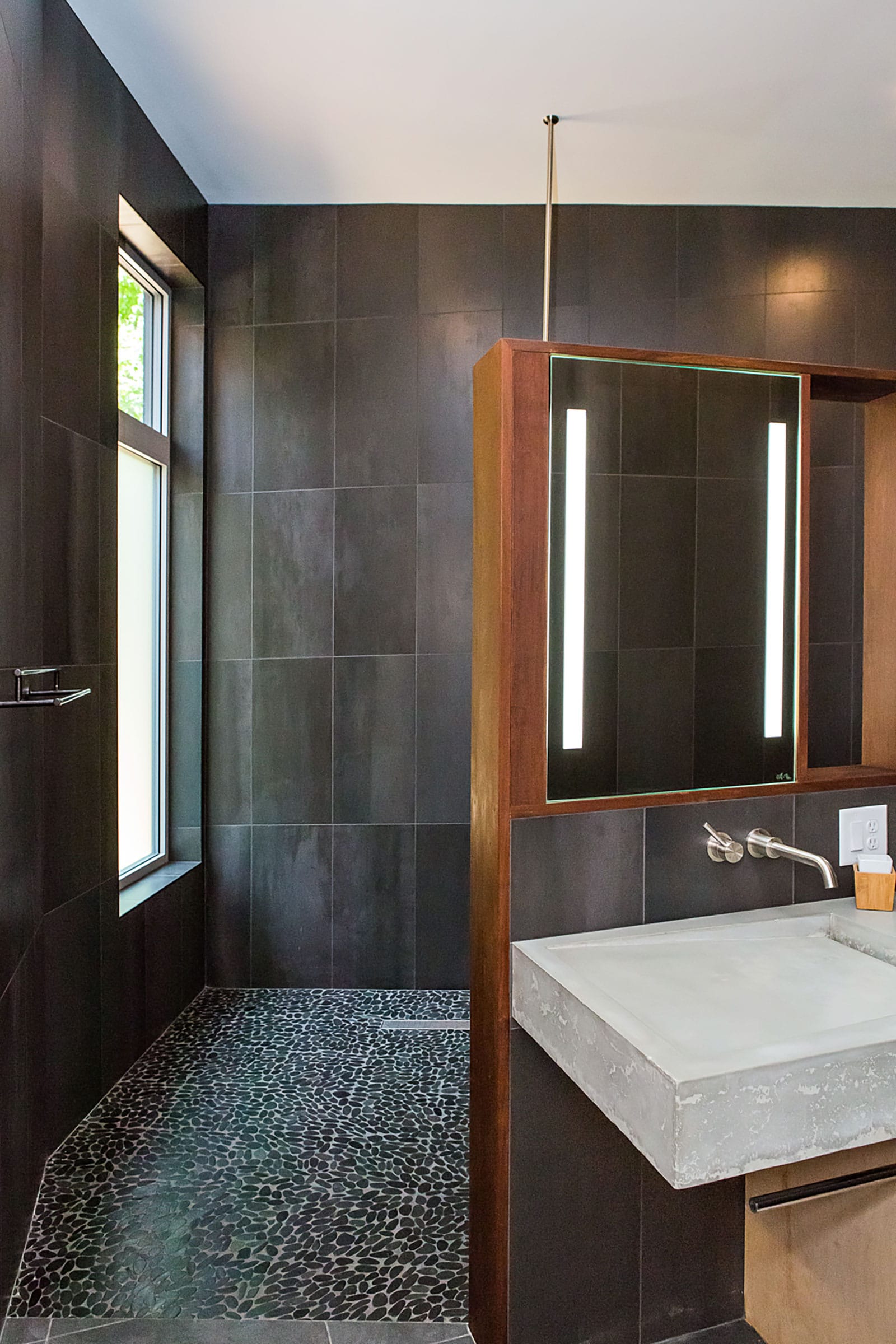
Photo by Iman Woods

Photo by Iman Woods
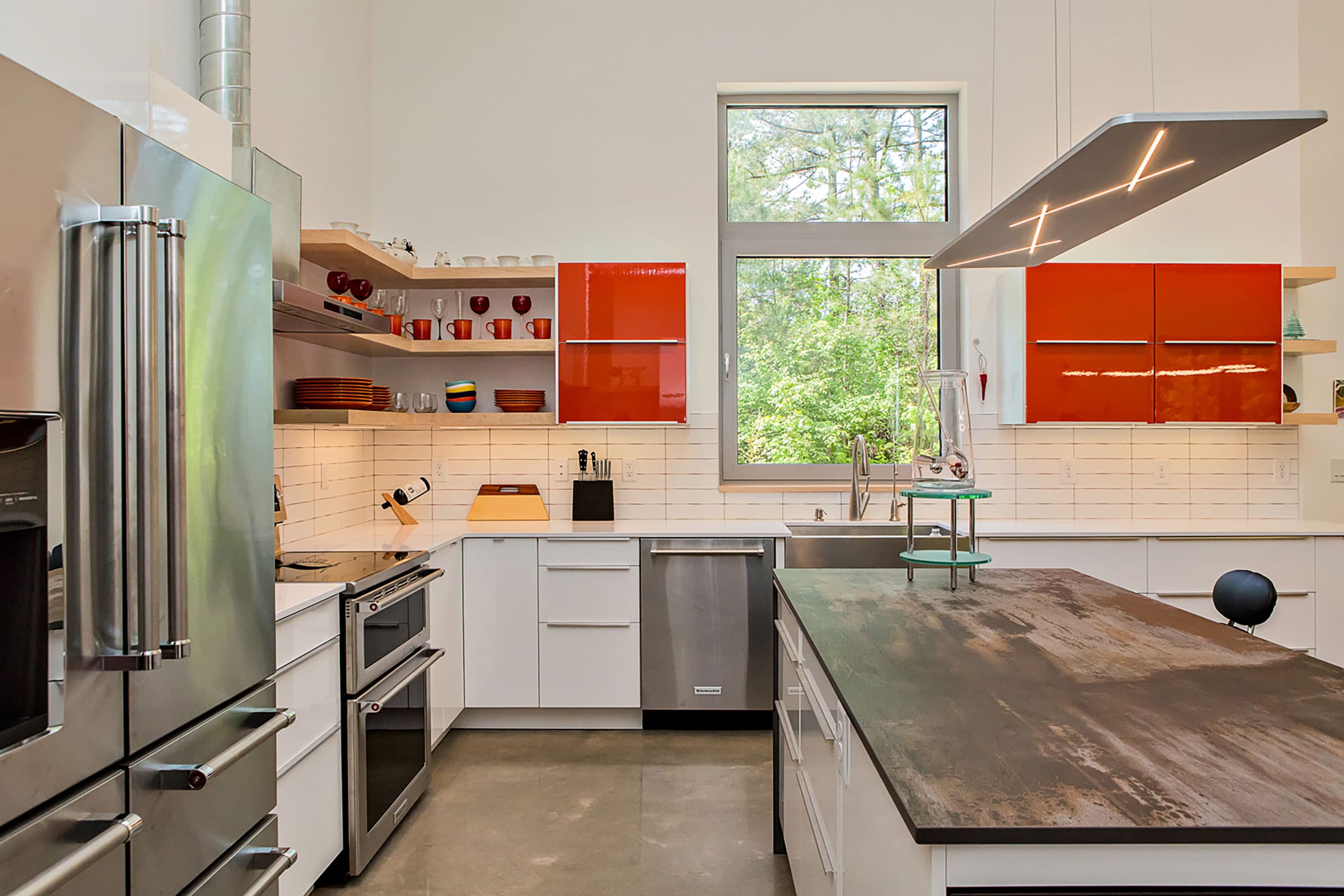
Photo by Iman Woods
Project: Serdar Net Positive House Location: Hillsborough, North Carolina Completion: January 2018 Size: 2,222 square feet Builder: Newphire Building Structural Engineer: Red Engineering and Design Windows and Doors: Awilux via Eurostar Fenestration Photovoltaic System: Action Solar
